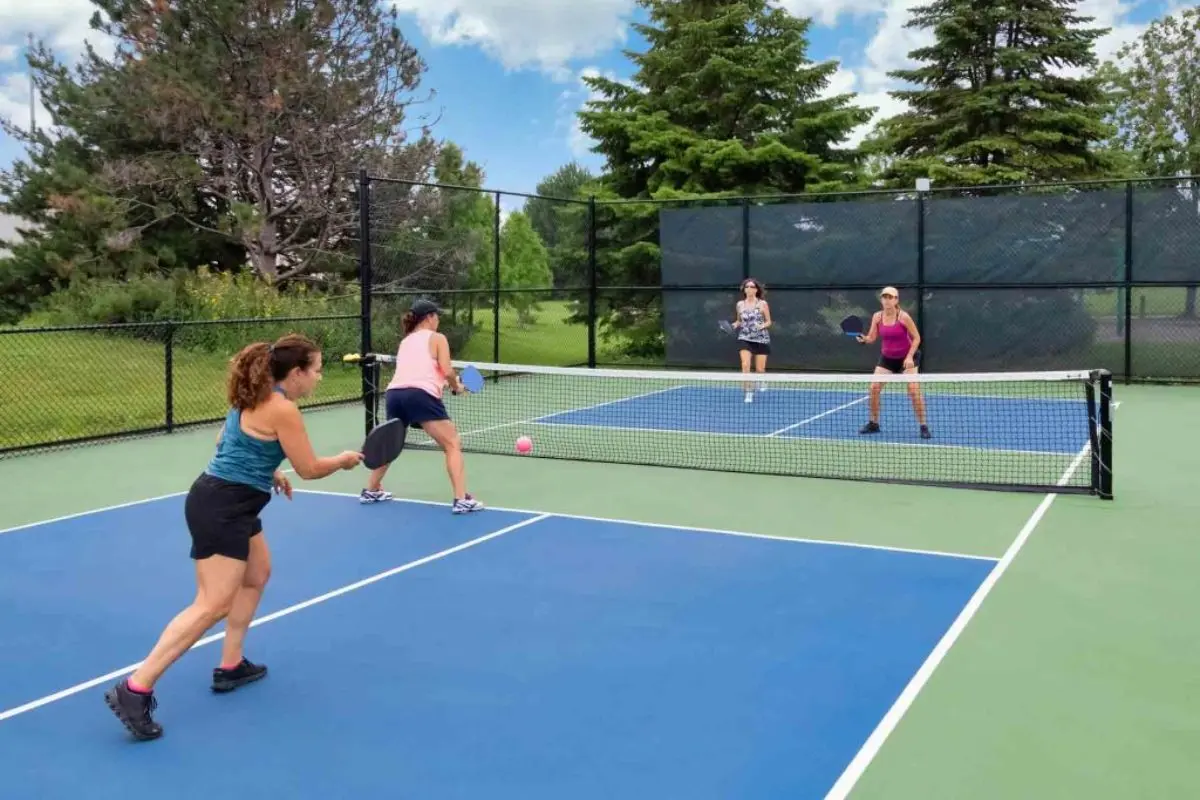Outdoor pickleball courts are primarily constructed using concrete or asphalt due to their durability and affordability. These materials ensure that courts can withstand varying weather conditions while providing a safe, high-quality surface for players.
Concrete is a popular choice because it is durable and requires minimal maintenance. The material is made by mixing cement, water, and aggregates, which are then hardened into a strong surface.
Asphalt is another commonly used material, combining aggregate with a binder like bitumen, and while cheaper and quicker to construct, it needs more maintenance over time.
Enhancing Safety and Comfort
To further improve the playing experience, outdoor courts often include texturing. A non-aggressive round silica sand is used to add texture, creating a slip-resistant surface.
Some courts also include a polyurethane sports overlay, which cushions the court and helps absorb shock. This cushioning is especially beneficial for players’ joints, making it a popular choice for players of all ages, particularly seniors.

Alternative Material Options
Though less common, some outdoor courts are made with plastic tiles. These tiles offer unique benefits but are more expensive and less durable than traditional materials like concrete or asphalt.
Key Considerations in Court Construction
A standard pickleball court measures 20×44 feet, similar in size to a doubles badminton court. The net height is important as well, standing at 34 inches in the middle and 36 inches at the sidelines.
Proper drainage and slope are crucial to prevent water from standing on the court after rain. This ensures that the surface remains in good condition and play can resume without delay.
Fencing is also essential for multi-court setups, protecting players from stray balls. The American Sports Builders Association recommends positioning courts north to south to avoid sun and shadow interference during play.
Why These Features Matter
The materials and design considerations make outdoor pickleball courts durable, safe, and enjoyable for players. With the right surface and features, courts can provide a reliable space for casual and competitive players to enjoy the sport year-round.
These thoughtful designs ensure that outdoor courts continue to meet the needs of players, offering long-lasting playability.
News in Brief: Outdoor Pickleball Courts
Outdoor pickleball courts are primarily made of concrete or asphalt for durability and affordability. Texturing and sports overlays improve safety and comfort, particularly for joint health.
While plastic tiles are an alternative, they are less durable. Key design considerations include court size, net height, proper drainage, and fencing. These features ensure long-lasting, safe, and enjoyable play.
ALSO READ: Bedford County’s Outdoor Pickleball Courts Are a Game Changer for the Community

